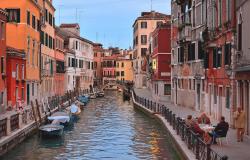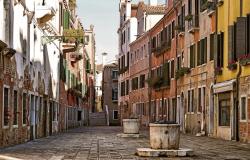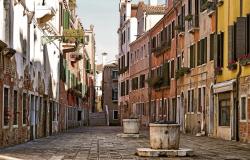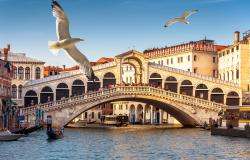 Italy's greatest poet Dante didn't have a big nose after all, a neglected Florence fresco indicates - confirming a sensational new reconstruction made earlier this week.
Italy's greatest poet Dante didn't have a big nose after all, a neglected Florence fresco indicates - confirming a sensational new reconstruction made earlier this week.
The fresco, believed to be the oldest Dante portrait, has always been sniffed at because, like the new reconstruction made by Bologna computer experts, it didn't conform to the iconic image of the vulture-faced genius who transformed Italian poetry.
Traditionally, the austere author of the Divine Comedy has always been depicted with a proud, aquiline nose.
But the Bologna skull reconstruction, which made a worldwide splash on Wednesday, gave him a pastier, less intimidating face with a decidedly smaller conk.
"The face is certainly softer and more rounded, and the nose is definitely not aquiline," said Dante expert Daniela Dini.
Arguing for its closeness to life, she said the picture - on the wall of the old seat of the Judges and Notaries' Guild in Via del Pronconsolo - was "more like a portrait done by someone who'd actually seen him than the usual totemic image of the supreme poet".
The nose on the Florence fresco is believed to be the oldest extant close-up of Dante's beak, Dini said.
The likelihood of a close likeness was therefore boosted, she argued, by the dating of the fresco, which was uncovered by chance a few years ago in a medieval Florentine guild house.
"It was probably done some 60-80 years after Dante died (in exile in Ravenna in 1321)," she told reporters.
Taken together with the high-tech Bologna face work, the long-snubbed fresco nose is set to sharpen debate about a facial trademark long blamed for putting his muse Beatrice off an earthly embrace.
Dante's forbidding features, wags have long suggested, were the reason the lovely Beatrice Portinari fobbed him off in real life - only to live forever in his life's work.
Italians aren't happy about the downsizing of their beloved poet's defining feature, however.
"A man with such an unimpressive nose could never have persuaded Virgil to follow him into the Underworld, facing down hellhounds and belittling old adversaries," said a leading article in the La Repubblica newspaper.
However, as the paper's commentator Francesco Merlo acknowledged, the makeover might have led Beatrice to "miracol mostrare" ("show her miracle") rather than condemning the poet to sublimate his feelings in the dolce stil novo ("Sweet New Style") he invented for her.









